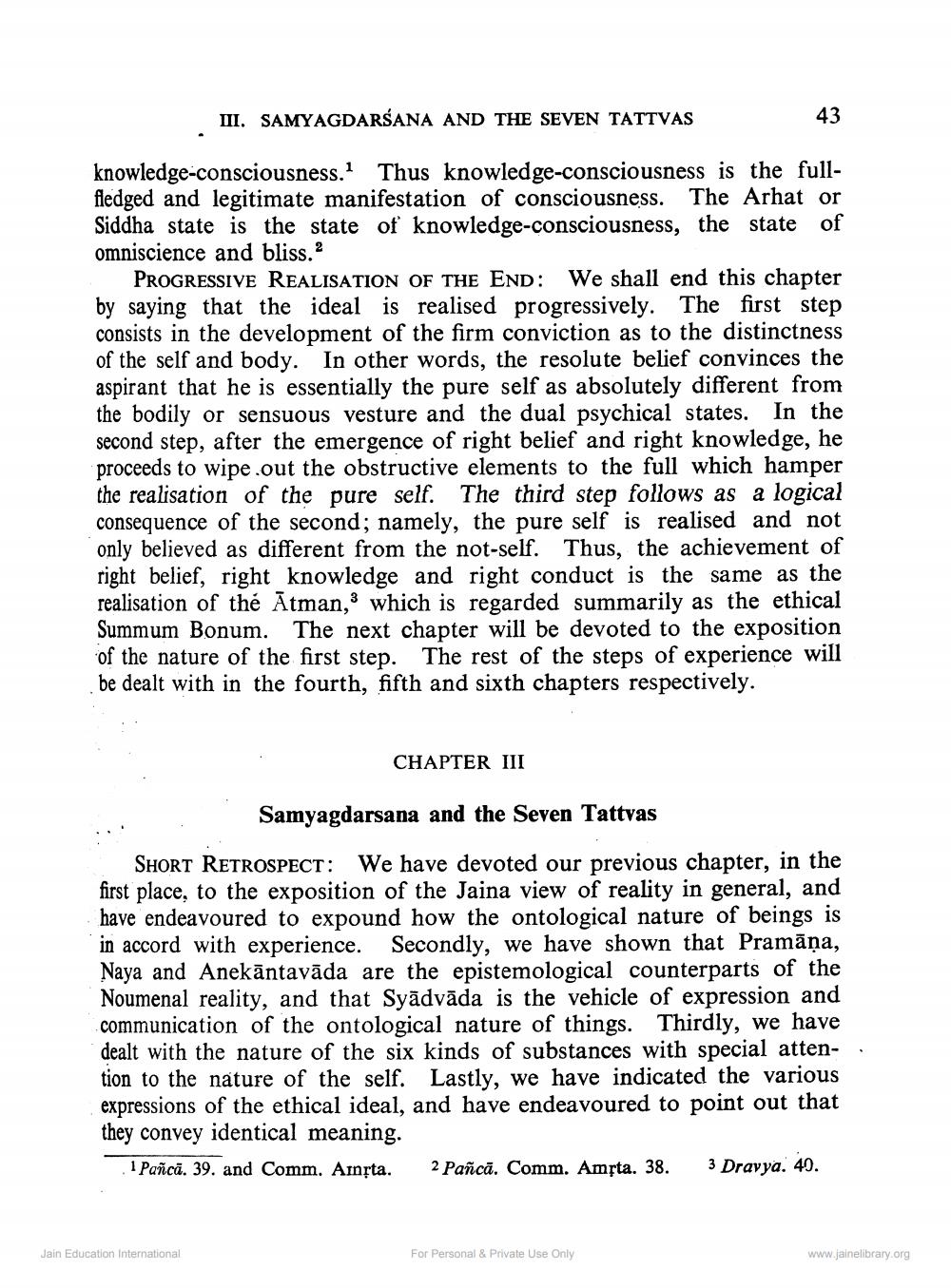________________
III. SAMYAGDARSANA AND THE SEVEN TATTVAS
43
knowledge-consciousness. Thus knowledge-consciousness is the fullfledged and legitimate manifestation of consciousness. The Arhat or Siddha state is the state of knowledge-consciousness, the state of omniscience and bliss.
PROGRESSIVE REALISATION OF THE END: We shall end this chapter by saying that the ideal is realised progressively. The first step consists in the development of the firm conviction as to the distinctness of the self and body. In other words, the resolute belief convinces the
spirant that he is essentially the pure self as absolutely different from the bodily or sensuous vesture and the dual psychical states. In the second step, after the emergence of right belief and right knowledge, he proceeds to wipe out the obstructive elements to the full which hamper the realisation of the pure self. The third step follows as a logical consequence of the second; namely, the pure self is realised and not only believed as different from the not-self. Thus, the achievement of right belief, right knowledge and right conduct is the same as the realisation of thé Ātman, 3 which is regarded summarily as the ethical
um Bonum. The next chapter will be devoted to the exposition of the nature of the first step. The rest of the steps of experience will be dealt with in the fourth, fifth and sixth chapters respectively.
CHAPTER III
Samyagdarsana and the Seven Tattvas
SHORT RETROSPECT: We have devoted our previous chapter, in the first place, to the exposition of the Jaina view of reality in general, and have endeavoured to expound how the ontological nature of beings is in accord with experience. Secondly, we have shown that Pramāņa, Naya and Anekāntavāda are the epistemological counterparts of the Noumenal reality, and that Syādvāda is the vehicle of expression and communication of the ontological nature of things. Thirdly, we have dealt with the nature of the six kinds of substances with special atten- : tion to the nature of the self. Lastly, we have indicated the various expressions of the ethical ideal, and have endeavoured to point out that they convey identical meaning.
1 Pañca. 39. and Comm. Ainta. 2 Pañcā. Comm. Amfta. 38. 3 Dravya. 40.
Jain Education International
For Personal & Private Use Only
www.jainelibrary.org




